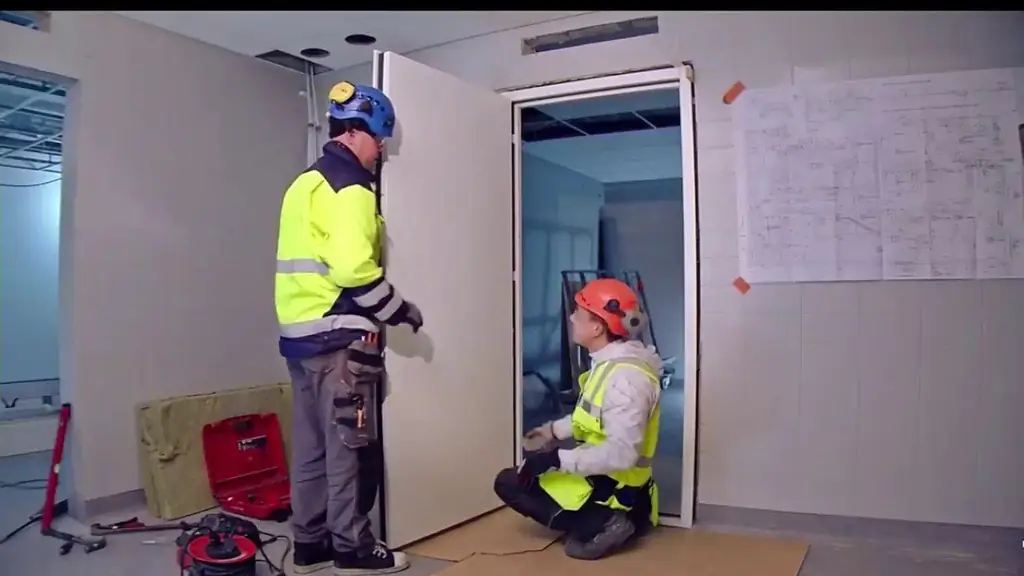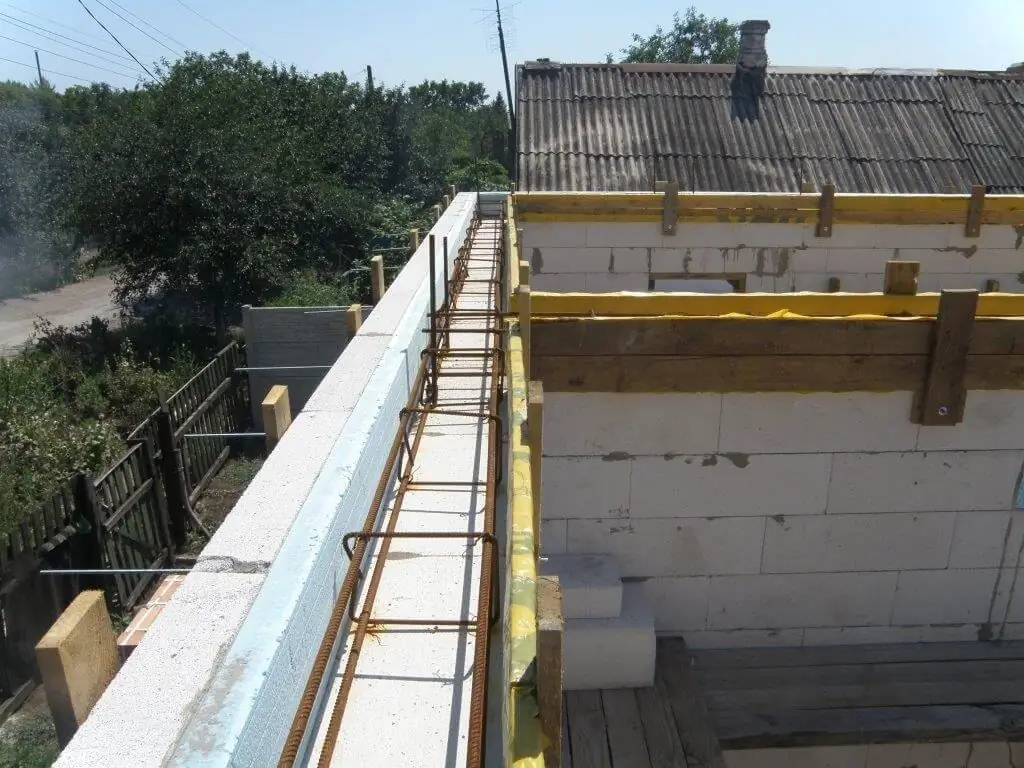
Table of contents:
- Author Bailey Albertson [email protected].
- Public 2023-12-17 12:53.
- Last modified 2025-06-01 07:32.
DIY installation of plastic doors

Following the wave of replacing wooden windows with plastic ones, there is a wave of replacing wooden doors. Sometimes it turns into the "ninth shaft" and sweeps away everything made of lumber in its path. Therefore, the time has come to figure out how to independently, without outside help, install this novelty, which, of course, will help save money during the installation and further operation.
Content
-
1 Methods for installing plastic doors
1.1 Video: installing a balcony block in accordance with GOST
-
2 What is required to install plastic doors
- 2.1 Tools for installing plastic doors
- 2.2 Consumables
-
2.3 Preparing the opening for installing a plastic door
2.3.1 Video: installation of plastic windows and a balcony door
-
3 Installing plastic doors with your own hands
3.1 Video: installing a plastic door
- 4 How to check the correct installation of a plastic door
-
5 Dismantling plastic doors
5.1 Video: how to disassemble and assemble a balcony door
Methods for installing plastic doors
A plastic door is a finished, complete product, consisting of a leaf, a box and all the necessary fittings. Unlike a wooden door, which is assembled from separate parts, a plastic door is supplied assembled, so the installer's task is only to correctly install it. In the vast majority of cases, doors are made to order, according to the dimensions of a specific opening. Therefore, it is not required to adjust the dimensions of the opening during installation.

For transportation of custom-made plastic windows and doors according to available sizes, specially equipped vehicles are used.
At the same time, there are a number of models designed for standard opening dimensions:
- 2000x190x70 mm;
- 2000x190x80 mm;
- 2000x190x90 mm.
These dimensions are coordinated by manufacturers with building codes and are suitable for most doorways in civil and residential construction
The depth of the opening does not matter, since the thickness of the plastic structure fits into any standard size of walls and partitions. The only exceptions are wooden partitions less than 75 mm thick. But even in this case, it is realistic to mount the door block into the wall. To do this, use the technology of building up the doorway.
Installation is carried out in one of two ways, which is selected on site based on the existing conditions.
-
Fixing the frame with brackets. For the bundle, special metal strips are used.

Bracket for fixing the plastic frame Using a hammer and pliers, the bracket is bent in the desired direction
-
Direct fixing of the door frame to the wall. Fastening is carried out using anchor fasteners.

Direct fixation of the door frame Direct fixation of the door frame using metal anchors
There are no differences in the degree of strength and reliability. In either case, the door rests rigidly on the wall. But in the first version, the appearance will be more attractive, and the frame will remain intact.
Video: installing a balcony block in accordance with GOST
What is required to install plastic doors
There is a slight difference between a balcony, an entrance and an interior plastic door. It consists in additional opening planes. Entrance and interior doors are a classic version of swing doors, which are opened and closed by turning the leaf around one of the axes (right or left) of the door frame. A balcony door is sometimes additionally equipped with a ventilation function and, like a window, swings open by turning the canvas relative to the threshold. This function is achieved by using more complex fittings, but it practically does not affect the installation process.
Tools for installing plastic doors
To assemble a plastic door, you need a standard carpentry toolbox:
- a hammer;
- hammer drill or hammer drill;
- screwdriver;
- a set of screwdrivers with different slots;
- measuring instruments - hydraulic level or construction laser level;
- tape measure, pencil or marker for marking;
- sealant gun;
-
construction knife.

Carpentry tools set Having a variety of tools at hand during assembly greatly speeds up and facilitates the installation process
Consumables
When installing doors, the following consumables are usually used:
-
polyurethane foam;

Polyurethane foam For the installation of plastic doors, it is recommended to use professional foam, which is not afraid of moisture and temperature changes
- mounting wooden or plastic wedges;
-
silicone waterproof sealant;

Silicone sealant A special gun is used to squeeze the sealant out of the tube.
- dry sand-cement mixture, water;
-
plastic L-shaped profile for installing slopes (if the slopes are mounted from plastic).

L-shaped plastic corner Plastic moldings are matched to size and color
The size of the L-corner is selected locally. The wider the profile wing, the easier it is to hide minor defects. The sealant is needed the same color as the door, most often white is used.
For interior and balcony doors, ready-made plastic slopes are used. To correctly choose the width of the acquired slope, measure the depth of the doorway and subtract the thickness of the door frame from it. As a result, the slope is selected with a margin of 2-3 cm in the larger direction, taking into account the error in the slope of the wall.

When choosing the width of the material for plastic slopes, it is necessary to take into account the natural curvature of the walls
If the slopes are planned to be cement, for example, on the front doors, then the calculation of the amount of the mixture is made in accordance with the table given by the manufacturer on the package. In this case, in addition to carpentry tools, you will also need spatulas and a container for preparing the solution.

For the device of the slopes, you can use gypsum fiber sheets (dry plaster)
Preparing the opening for installing a plastic door
The preparatory work consists of several stages.
-
Preparing the doorway. If the door is made to order, then its dimensions are ideally matched to the original dimensions. In this case, preparation consists in clearing the opening from foreign objects, removing crumbling plaster and priming the ends of the partition. A deep penetration primer is used, which adheres well to the surface and removes dust. If a standard door is being installed, you need to adjust the opening to the size of the door block. The size of the technological gaps along the entire perimeter is kept within 3-5 cm. The bottom of the frame rests rigidly on the threshold (no gap). Sometimes for this you have to expand the opening with a perforator, sometimes, on the contrary, lay out an additional row of bricks (or build up the wall with a wooden bar).

Preparing the doorway If the door was made to order, to prepare the opening, you need to beat off the dilapidated plaster and prime the ends
- Dismantling the door block. As a rule, transportation is carried out assembled, which guarantees the safety of the product. Therefore, to facilitate installation, the sash is separated from the frame. For this, the fingers are removed on the hinges. When performing the operation, you need to be careful, since the canvas with a glass unit is quite heavy - it is advisable not to drop it.
-
Installation of fasteners to the frame. If fixing with brackets is used, three metal plates are screwed onto the outside of the box. For this, there are special grooves in the side posts. If the fastening is carried out with ordinary anchors, then holes of the required diameter are drilled through the door frame. In this case, the heads of the anchors will remain outside, subsequently they are closed with plastic plugs. The number of holes is also three on each side.

Mounting brackets Plasterboard straight hangers can be used as mounting brackets
This concludes the preparatory work.
Video: installation of plastic windows and a balcony door
DIY installation of plastic doors
In the step-by-step instructions, we will reflect the assembly sequence of the plastic door.
-
The door frame is installed. As already noted, the box is a non-separable rectangular structure. The challenge is to position the frame correctly inside the doorway. First of all, you need to decide how exactly to mount it in relation to the depth of the opening. The door can be located both in the middle of the end of the wall, and flush with one of the planes. In the first case, it becomes necessary to equip slopes on both sides. In the second - on one side there will be platbands, and on the other - slopes. Based on this, the location of the threshold is determined. The frame is installed with its lower part on the threshold line and raised to a vertical position. In some cases, it is necessary to raise the threshold to the level of the finished floor. To do this, use additional stops in the form of wooden bars or pieces of brick. After that, the structure must first be fixed. It is best to support it on the dowels screwed near the top crossbar. The same stops will help fix the lower part. Four support dowels will define the plane of the door block.

The layout of the door relative to the opening If the width of the box coincides with the thickness of the doorway, the joints are closed with platbands on both sides
-
A hydraulic level (up to 50 cm long) adjusts the horizontal position of the sill. The desired position is fixed by means of wedges driven in with a hammer under the lower frame bar. It is necessary to achieve an absolutely level position - the air bubble should be located strictly in the middle.

Control of the horizontal plane of the threshold The accuracy of the hydraulic level readings can be checked on known horizontal planes, for example, on a window sill, balcony railings, etc.
-
The side posts and the top bar of the box are fixed in the same way. In this case, it is not out of place to check the correspondence of the vertical and horizontal orientation of the doors several times. And only after the block is fixed on all four sides, you can proceed to the main fasteners. In this case, one must strive to ensure that the side clearances are approximately the same.

Fixing the side struts The side posts are first pre-fixed with wedges and then finally fastened with anchor nails
- The box is fastened with self-tapping screws. The holes are drilled with a perforator if the wall is stone, or with a drill (screwdriver) if the opening is wooden. It is important here to mount the stops in such a way that they do not deform the door frame during installation. For these reasons, the screws are left not fully screwed in, a full tightening is performed only at the very end of the operation. It is especially important to observe this rule when fixing the frame using the direct fixation method (without the use of brackets). All tightening steps are accompanied by orientation control in the horizontal and vertical planes.
-
The door leaf is mounted. The procedure consists in hanging the sash on the hinges. The assembly begins with the lower canopy, after which the canvas is set in a closed position, the halves of the upper loops are aligned and a metal finger is threaded into the regular hole. The procedure for hanging the curtain on doors with the ventilation function is the same. After that, the sash position is adjusted. In plastic doors, adjustable awnings are used, with the help of which the correct position of the curtain is adjusted.

Canopy canopy The blade position is adjusted using special mechanisms built into the door structure
-
Filling the gaps between the wall and the door frame. As already noted, two situations are possible here:
- a plastic block is installed at the entrance to a house or apartment and acts as an entrance door. In this case, the voids are filled with a sand-cement mixture. This provides reliable protection against burglary;
-
the door block is mounted on the balcony or between rooms. There is no need for reinforcement, so leveling the gaps with polyurethane foam is enough. It is best to use low expansion foam. The voids are filled evenly, to ensure quick curing, it is recommended to moisten the surface with water before applying the foam. After complete drying, the excess is carefully trimmed with a knife.

Filling the gaps with polyurethane foam In order for the gaps to be filled with an even and dense layer of foam, it is better to use cylinders mounted on a professional gun
-
In order to make the doorway look aesthetically pleasing, decorative slopes are installed over the mounting hole. Entrance doors are bricked up with cement mortar, interior and balcony doors are often framed with ready-made plastic panels. The technology for installing slopes is not very difficult, but it requires accuracy and certain skills:
-
for the entrance doors a standard mixture of sand, cement and water is prepared. A layer of mortar is poured with a trowel and leveled with a spatula. The procedure can be broken down into several steps, gradually connecting the edge of the doors to the corner of the door jamb. First, the lateral vertical planes are "brought out", then - the horizontal plane above the upper crossbar;

Sand-cement mixture The mortar for bricking entrance doors is prepared by adding water to the dry mixture according to the recipe on the package
-
plastic slopes are installed on polyurethane foam. First, two vertical surfaces are cut. In width, they are released over the edge of the wall and cut off after the foam has completely solidified. The top bar is installed last. An L-shaped molding is installed at the joints of the plastic panels, the corners between the slopes and the frame are smoothed and sealed with a thin layer of silicone sealant.

Installation of plastic door slopes In some structures, instead of foam, mineral wool is used, and the sloping panel is fixed using a strip with a latch lock
-
In different situations, different fastening materials are used. So, in the doorway of a wooden house, only self-tapping screws with a large thread are used. To a wall made of soft material - foam concrete or aerated concrete - the door block must be fixed with special dowels designed for a porous surface. In brick and concrete buildings, a standard anchor nail is used.
Video: installing a plastic door
youtube.com/watch?v=7v83KsAV3i8
Upon completion of the assembly, the doors are equipped with auxiliary fittings - door peepholes and door closers. Since it is undesirable to drill the canvas once again, it is better to use an electronic type peephole. It is fixed at eye level - at a height of 150-160 cm from the floor. But if installation in this position is unacceptable, you can move the eyepiece (and in fact, a miniature webcam) to the upper bar, making allowances for a comfortable viewing angle.

An electronic peephole is a miniature camera, the image from which is transmitted to a stand-alone monitor or a mobile phone display
Closers are attached in the usual way. The housing with the power unit is located on the wall, and the end of the movable rod is fixed at the top of the canvas. The closer model is selected based on the weight of the sash and the size of the swing angle. The higher the pulling force, the higher the requirements for fastening strength.

Installation of an adjustable door closer significantly saves the resource of the door, compensating for the sharp pops of the sash when it is closed
How to check the correct installation of a plastic door
Before starting operation, the plastic door must be tested. Control is carried out according to the following parameters.
- Tight fit of the sash to the support plane of the frame. In the working position - with the doors closed - the sash should fit evenly around the entire perimeter, and the rubber seal should be evenly pressed along the entire contact plane.
- The size of the gap between the canvas and the frame. The gap on the side opposite to the seal must not exceed the permissible dimensions (3-4 mm). The difference in the size of the gap in different corners indicates a skewed sash.
- Door hinges. During operation, they should not emit squeaks, and doors should be opened and closed silently.
- The locking device, including the latch of the handle, must be released smoothly, without undue effort.
If there is an obvious discrepancy in at least one of the points, it is necessary to adjust the position of the door leaf. As a rule, the delivery set includes an adjustment key and a control screw location diagram. The key is a hexagonal rod with a diameter of 2-3 mm, bent for convenience in the shape of the letter G. Following the instructions, you need to achieve the optimal position of the door leaf.

When adjusting, the number of key turns recommended by the manufacturer must be observed
Dismantling of plastic doors
If disassembly is necessary, the door is dismantled in the reverse order of assembly. Let's briefly list the main stages.
- The door leaf is removed.
- Slopes are dismantled.
- The fasteners are loosened.
- The door frame is released from the opening.
- The remnants of polyurethane foam are cleaned off.
- For transportation, the removed door is reassembled, the leaf is inserted into the frame, and fixed with a lock latch in a fixed position.
Video: how to disassemble and assemble a balcony door
When performing work on the installation of plastic doors yourself, you need to remember about safety precautions, follow the installation technology recommended by the manufacturer. Care must be taken when handling a glass unit, and when using electrical tools - a puncher, drill, screwdriver - use personal protective equipment: gloves, goggles and a respirator.
Recommended:
Potato Storage: How To Properly Carry Out At Home, The Required Temperature, Including In The Winter On The Balcony Of The Apartment

How and where to store potatoes. Container for storage at home. Is it possible on the balcony. Errors
Installation Of Fire Doors: How To Properly Carry Out The Installation And What Regulatory Documents Must Be Followed

Fire doors installation technology, for which premises they are suitable. Features of service and repair
Adjusting Plastic Doors: Instructions For Setting Up And What Tool Is Required

Is it possible to independently adjust plastic doors. What and how to adjust: clamp, hinges, hinges. Tools for the job
Making Glass Doors, As Well As How To Install Them Correctly And What Tools Are Required To Carry Out The Work

Self-manufacturing technology of glass doors. How to install, adjust, dismantle them correctly. What tools can be used
Armopoyas For Mauerlat And Its Purpose, As Well As How To Properly Carry Out Installation Work

Armopoyas functions and its main parameters. How to make your own concrete mix. Instructions for the construction of an armored belt and attaching a Mauerlat to it
